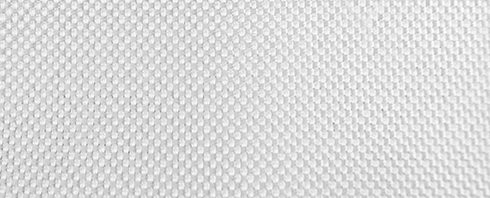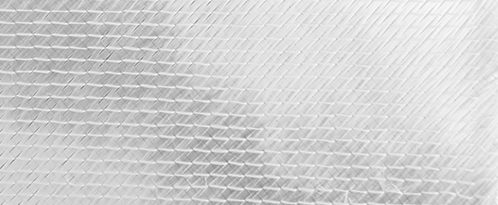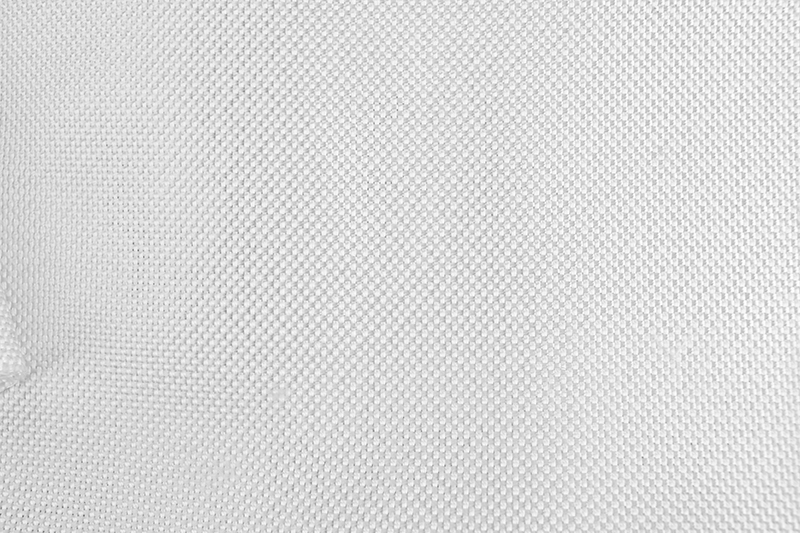
By Jeff Wright – GBI VP of Technical Services
When someone says “fiberglass”, people may envision a shiny boat hull or even pink insulation, but a composite repair professional pictures a pure white fabric that could be woven in multiple ways and is available in multiple thicknesses. Specifically, fiberglass is the reinforcing fiber used in most marine composites. When epoxy encapsulates fiberglass, it becomes a Fiber Reinforced Plastic (FRP) material. Since you are reading this article in Epoxyworks—and are hopefully enjoying it—let’s assume that the plastic component of FRP materials will be WEST SYSTEM® Epoxy. This article will focus on the different fiberglass fabrics we offer to use with WEST SYSTEM Epoxy.
The fabrics we offer are similar in strength (per unit thickness), but their differences are important to understand so that you can select the most appropriate fabric. Selecting the appropriate fabric can ensure you achieve your desired thickness, weight, and ability to conform to the surfaces to which the fabric is applied.
As I said earlier, they have similar strengths, but that should not be confused with the absolute strength of the entire laminate. I am referring to the “specific strength” of the fiberglass or the stress it can withstand per unit of cross-sectional area. For most applications, using two different fabric styles to achieve the same thickness will result in very similar properties. The fabric style will have more influence on the ability to conform, ease of wet out, and surface finish. To help decide which fabric to use I will discuss the characteristics of WEST SYSTEM fiberglass fabrics.

These fabrics are manufactured, just as the description implies, by weaving small individual yarns of fiberglass over and under one another in a tight 0-degree/90-degree pattern called a plain weave pattern. This should not be confused with woven roving which is a fabric where a larger diameter yarn called roving is woven in a similar way but resulting in a much heavier and coarser pattern.
Woven roving is commonly used by manufacturers for hull lamination because it enables them to build thick laminates in areas with a minimal number of layers. The coarse weave does not optimize resin content which is not a significant concern for most production builders. WEST SYSTEM does not offer woven roving because it is not suited for many of our customers’ applications.
The lightweight woven cloth fabrics are ideal for many types of small wooden boatbuilding projects as well as lightweight FRP applications. The tight weave results in a smooth texture that can easily be filled in by applying one to two additional coats of epoxy. WEST SYSTEM Epoxy offers the following woven cloth products.
740
This is a 4 oz. woven cloth, to be specific it is 4 oz./yd2. It is the lowest-weight fabric we offer and if you refer to our thickness per layer chart, it is the thinnest per layer. It is light enough that when properly wet out it will be transparent, which is an important attribute for strip plank canoes or other bright finished wooden boats that require a layer of fiberglass over their surface. The low weight and thickness also enable this product to easily conform to complex surfaces. If a substantial thickness is required, such as the repair on a solid hull side laminate, a significant number of layers will be required.
742
At 6 oz./yd2, this fabric will still provide a transparent laminate with 50% more thickness (and weight) than WEST SYSTEM 740. It is still highly conformable, and is well-suited for strip plank construction where a little more thickness and the resulting strength are required.
745
This is a very common fabric in the boat-building world and it is sometimes just called “boat cloth”. The 10 oz./yd2 weight still enables it to wet out easily and has relatively good drapability, but it will not provide a transparent layer. If it is used as sheathing on a wooden boat, you should consider a painted final finish.
A common use of this fabric in production boatbuilding is as a final layer. After a thick laminate is wet out, one layer of 10 oz./yd2 fabric is simply laid on the laminate without adding resin. This final layer of woven cloth will be wet out by the excess resin and provide a much smoother finish than a coarse woven roving fabric.

A knitted fabric is a fabric where the yarns are not woven under and over one another, instead they are simply laid on top of one another, then a polyester thread is used to stitch them together. This manufacturing process enables the yarns to be oriented in multiple directions. Orienting two layers of yarns at +45 degrees and -45 degrees to the edge of the fabric makes a very versatile fabric that is referred to as +/-45 biaxial fabric or biaxial for short in the industry. The non-woven nature avoids the crimps where the yarns have to bend over and under one another. This increases strength when the fabric is in tension by eliminating the stress concentrations at each crimp. It also improves drapability, reduces areas where resin can collect (which improves the fiber-to-resin ratio), and provides a smoother finish than a woven roving fabric. WEST SYSTEM offers two biaxial fabrics:
737
This is a fabric that weighs 17 oz./yd2 and the fibers are oriented at +/-45 degrees to the edge of the fabric. Orienting the fibers in these directions gives the fabric good conformability, but it is heavier in weight resulting in greater thickness per layer than a lightweight woven cloth.
This fabric is well-suited for new FRP construction and the repair of common marine laminates. The surface finish is not as smooth as a woven cloth, which is not an issue for most composite repairs because fairing compound will probably be required. Keep in mind that one feature of FRP construction is the ability to mix and match fabrics. For example, it is acceptable to laminate three layers of 737 17 oz. Biaxial Fiberglass to build up the needed thickness and a final layer of 745 10 oz./yd2 cloth for a smoother finish before fairing.
738
WEST SYSTEM 738 fabric is a good example of how fabrics used in FRP structures can be a combination of different fabric types. It consists of the same 17 oz./yd2 that makes up our 737 fabric and has a ¾ oz./ft2 chopped strand mat (CSM) stitched to one side. The purpose of the chopped strand mat is to increase the thickness per layer resulting in fewer layers needed to achieve the desired thickness. Since the CSM is stitched, there is no issue with binders that are used to hold some CSM fabrics together which may not be compatible with epoxy resins.
The chopped strand on the mat changes the properties of this fabric when compared to 737. Since the CSM layer does not have continuous fibers, it is not as strong as the 17 oz./yd2 component. This fabric will be slightly weaker per unit thickness than 737. It is also important to note the difference in how the weights are measured.
Using English units of measure, the continuous fiber portion of the fabric is measured in oz./yd2 while the CSM portion is measured in oz./ft2. This is then described with a 4-digit number such as 1815, 1208, 1708 and many others. The first two digits are the weight of the biaxial portion, the third and fourth digits are the weight of the CSM portion. As expected with our English units of measure it gets even more confusing, 0.75 oz/yd2 is a 3-digit number, so it becomes “08”. So, for those that have heard of “1708” fabric, 738 would be considered a 1708 type fabric, 17 oz/yd2 biaxial with 0.8 oz./ft2 of chopped strand mat.
Tape
Tape describes a fabric cut into a narrow width between 3″ and 12″. This narrow width is good for applications such as tabbing structuring into a hull, where the tabbing laminate forms an almost 90-degree angle between the hull shell and bulkhead or stringer. Although you can simply cut a full-width fabric to the desired width, the methods used by fiberglass manufacturers to cut to a specific width result in a very accurate and clean-cut edge.
729, 731, 732, 733
These tapes are 9 oz./yd2 woven cloth in widths ranging from 2″ to 6″. The benefit of these tapes is that they are finished on the edge so they will not unravel. Attempting to cut narrow strips from a wide roll of woven cloth can result in frayed edges and yarns coming loose and making lamination more difficult.
727 Biaxial Tape
This 17 oz./yd2 biaxial tape is 4″ wide. An important feature of this tape is the polyester stitching that is used to hold the +/- 45 degree fiberglass yarns together. This stitching runs the length of the tape. Keep in mind that if narrow strips of biaxial tape are cut (perpendicular to this stitching), the tape will not maintain its width, and it will quickly be pulled out of shape.
The fabrics that WEST SYSTEM offers are versatile and cover many applications, but there are other fabrics available that can also be used with WEST SYSTEM Epoxy. It should also be noted that specific fiber direction in advanced composites can be critical and require unidirectional or tri-axial fabrics that we do not offer. As always, feel free to call our Technical Service staff to discuss your application. I hope this information, and the descriptions in our User Manual & Product Guide, make it easier to select the best fiberglass for your next project.





